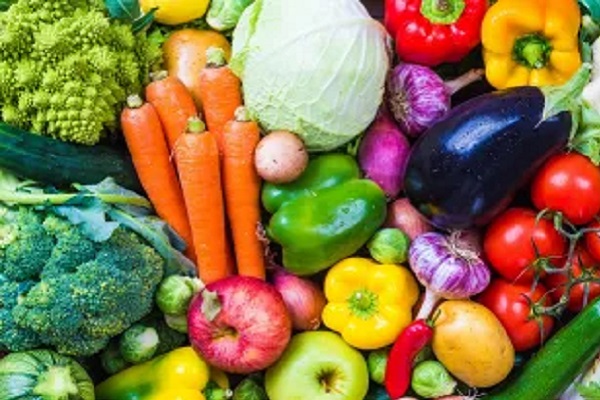
Children need vegetables more than any other food at the table but getting them to eat often proves difficult. You can’t blame children though because most adults don’t warm up at the sight of veggies either. However, as a parent, you want your children in the best of health which is why you have to get them to eat vegetables somehow. It can be difficult at the start but you have to keep bringing the veggies on the table during every meal. If pleas and encouragement don’t seem to cut it, then these 10 steps might come in handy.
Lead by Example
Children are most likely to do what they see you doing, so if you don’t like vegetables, it would be safer to not let them notice that. When adults at the table frown at vegetables and pass on vegetable dishes while serving, children are likely to follow suit. If you want children to start eating vegetables, it would be nice to start doing so while they see and you have to seem to be liking it, even when you don’t. However, it is best to start with something you like yourself and they are most likely to do the same. You can make changes as you go but the first impression from you has to be that vegetables are awesome and important.
Make Them A Part Of Every Meal
It can be disappointing when you have to return untouched vegetable dishes after dinner every day but that doesn’t mean you give up. If they won’t eat it at dinner, you could introduce it at breakfast and lunch trying new vegetables every time depending on availability and how the children react to each of them. You can try alternating, say cucumber and cabbage at breakfast, spinach and other greens for lunch and carrots and fruits for dinner. Whichever combination works for you, just make fruits and veggies part of every meal and encourage the fussy eaters to take at least on bite of each.
Involve Them In The Preparation
Many parents forget but children also like being handy, well, except when they are throwing tantrums over this or that. Getting children involved in the kitchen is one of the best ways to get them to appreciate the effort and like the results. When you involve them in the chopping and dressing, you will get to understand what they like and how they like it. Don’t ignore the details as they cut shapes into tomatoes and capsicum, they are more likely to eat that than the alternative anyway so it will be great to just play along.
Alternate the Vegetables
The monotony of having to eat the same thing every time can also create dislike for one vegetable which could extend to others. To get picky eaters to eat more vegetables, you have to give them a variety. You can get creative about it by mixing regular options into sauces while serving new options independently. Using different vegetables to make soup whenever possible can also be a great way to get children to try out the food. They will be anxious to try out the food if they know that it is a different vegetable being served each time.
Serve Vegetables First
This may sound like blackmail but it isn’t. It is actually a great way to get picky eaters to eat more vegetables without affecting their taste of whatever foods they like the most. In most cases, children pass by vegetables because they can see other foods that they consider tastier than veggies. Not that they don’t like the vegetables, it is just that beef products and the sugary options seem more palatable than carrots and broccoli. However, if the vegetables are served first while they are still hungry and anxious, you will get them to eat more.
Make Them More Accessible

Children make more trips to the fridge than adults on average, and that may be a great opportunity to get them to eat vegetables. If you make fruits and vegetables more accessible in the fridge and kitchen cabinets than candy and everything else, they might just opt to take a bite of whatever they can reach first and leave everything else. You could also change your shopping patterns so that you have more vegetables in the house than everything else. That way, you will run out of sugary foods and meat products earlier leaving vegetables as the only option for them to munch on until you make your next trip to the supermarket.
Get Creative
If your child won’t eat steamed cabbage, then you could simply blend it into a smoothie and flavour it with something they like. You could also start mixing more vegetables into your casseroles, sauces and stew, but just ensure that the taste stays within their acceptable levels. You could also cook more vegetable-based food such as veggie omelettes, veggie noodles, etc. As you get creative with your vegetables, you will get your child to eat more vegetables in whatever foods they enjoy regularly.
Veggie friendly media
It is not wise to manipulate children into becoming vegan unless that is their choice, but if you have a hard time getting them to eat vegetables, media could be a great tool to employ. Having children try out more vegetarian recipes, read about the importance of eating vegetables and watch vegan-friendly shows on TV could improve your child’s impression of vegetables. It doesn’t have to be anything radical, just any material that will make children understand why vegetables are important and how they can make eating vegetables more fun.
Introduce A Reward System
Praising your children when they take an important step in life goes a long way and picky eaters are not any different. When your child tries out a new vegetable or gets to eat more of it, it is important to praise and encourage them. If simple praises don’t seem to work, a little bribe may come in handy. Eating vegetables could be rewarded with something they like more such as ice cream or a trip to the cinema. It is important to teach your children that eating vegetables is just a normal part of everyday life though. Making a big deal out of eating vegetables can set a bad precedent, but a little reward for extra effort won’t hurt.

Have Them Help Choose Vegetables While Shopping
Taking picky eaters shopping works just as well as involving them in the preparation. You should take your children to the vegetable markets or shelves in the supermarket and have them pick the vegetables they like. You can also interact with them showing them why you pick certain options and why it is important for them to eat. That way, everyone understands the story behind every vegetable you serve on the table and they are more likely to eat once they understand.








